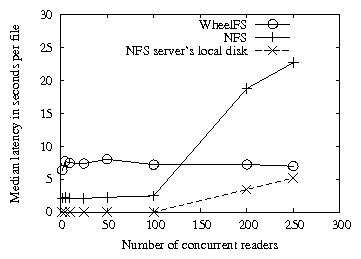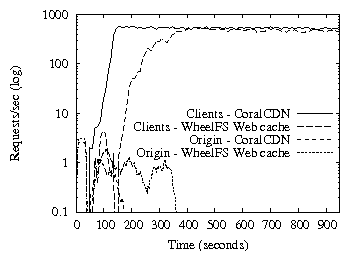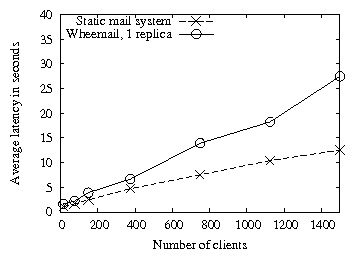| Cue Category | Cue Name | Type | Meaning (and Tradeoffs) |
| Placement | .Site=X | P | Store files and directories on a
server at the site named X. |
| .KeepTogether | P | Store all files in a directory
subtree on the same set of servers. |
| .RepSites=NRS | P | Store replicas across NRS
different sites. |
| Durability | .RepLevel=NRL | P | Keep NRL replicas for a data
object. |
| .SyncLevel=NSL | T | Wait for only NSL replicas to
accept a new file or directory version,
reducing both durability
and delay. |
| Consistency | .EventualConsistency | T* | Use potentially stale cached
data, or data from a backup, if the
primary does not respond quickly. |
| .MaxTime=T | T | Limit any WheelFS remote
communication done
on behalf of a file system operation
to no more than T ms. |
| Large reads | .WholeFile | T | Enable pre-fetching of an entire
file upon the first read request. |
| .Hotspot | T | Fetch file data from other
clients' caches to reduce server
load. Fetches multiple blocks in
parallel if used with
.WholeFile. |










